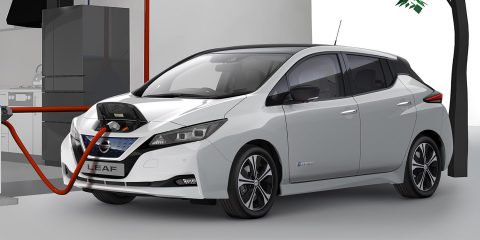Big Car old account
Published 8 Mar 2019To help me continue producing great content, please consider supporting me: https://www.patreon.com/bigcar
Help support my channel through these Amazon US affiliate links:
Triumph Spitfire t-shirt: https://amzn.to/2KdY33m
Triumph Spitfire baseball cap: https://amzn.to/2U1SrZF
Triumph sweatshirt: https://amzn.to/2KgGIXq
Triumph Spitfire model car: https://amzn.to/2U4gnvo
Triumph keyfob: https://amzn.to/2YTeKV4
Triumph Spitfire metal sign: https://amzn.to/2U2u4ejThe Spitfire is a beautiful automobile, a thing of wonder penned by an Italian genius, but it almost never happened. If not for a chance find in the dusty corner of a factory it would have remained merely a “could have been”. But Triumph produced a car that still inspires new creations today and has a strong and loyal fan base around the world, nearly sixty years since it burst on the scene.
#TriumphSpitfire
October 3, 2021
The Triumph Spitfire Story
June 7, 2021
Dude, where’s my (flying) car?
The latest of the reader-contributed book reviews at Scott Alexander’s Astral Codex Ten looks at Where is my Flying Car? by J. Storrs Hall:
What went wrong in the 1970s? Since then, growth and productivity have slowed, average wages are stagnant, visible progress in the world of “atoms” has practically stopped — the Great Stagnation. About the only thing that has gone well are computers. How is it that we went from the typewriter to the smartphone, but we’re still using practically the same cars and airplanes?
Where is my Flying Car? by J. Storrs Hall, is an attempt to answer that question. His answer is: the Great Stagnation was caused by energy usage flatlining, which was caused by our failure to switch to nuclear energy, which was caused by excessive regulation, which was caused by “green fundamentalism”.
Three hundred years ago, we burned wood for energy. Then there was coal and the steam engine, which gave us the Industrial Revolution. Then there was oil and gas, giving us cars and airplanes. Then there should have been nuclear fission and nanotech, letting you fit a lifetime’s worth of energy in your pocket. Instead, we still drive much the same cars and airplanes, and climate change threatens to boil the Earth.
I initially thought the title was a metaphor — the “flying car” as a standin for all the missing technological progress in the world of “atoms” — but in fact much of the book is devoted to the particular question of flying cars. So look at the issue from the lens of transportation:
Hans Rosling was a world health economist and an indefatigable campaigner for a deeper understanding of the world’s state of development. He is famous for his TED talks and the Gapminder web site. He classifies the wealthiness of the world’s population into four levels:
1. Barefoot. Unable even to afford shoes, they must walk everywhere they go. Income $1 per day. One billion people are at Level 1.
2. Bicycle (and shoes). The $4 per day they make doesn’t sound like much to you and me but it is a huge step up from Level 1. There are three billion people at level 2.
3. The two billion people at Level 3 make $16 a day; a motorbike is within their reach.
4. At $64 per day, the one billion people at Level 4 own a car.
The miracle of the Industrial Revolution is now easily stated: In 1800, 85% of the world’s population was at Level 1. Today, only 9% is. Over the past half century, the bulk of humanity moved up out of Level 1 to erase the rich-poor gap and make the world wealth distribution roughly bell-shaped. The average American moved from Level 2 in 1800, to level 3 in 1900, to Level 4 in 2000. We can state the Great Stagnation story nearly as simply: There is no level 5.
Level 5, in transportation, is a flying car. Flying cars are to airplanes as cars are to trains. Airplanes are fast, but getting to the airport, waiting for your flight, and getting to your final destination is a big hassle. Imagine if you had to bike to a train station to get anywhere (not such a leap of imagination for me in New York City! But it wouldn’t work in the suburbs). What if you had one vehicle that could drive on the road and fly in the sky at hundreds of miles an hour?
Before reading this book, I thought flying cars were just technologically infeasible, because flying takes too much energy. But Hall says we can and have built them ever since the 1930s. They got interrupted by the Great Depression (people were too poor to buy private airplanes), then WWII (airplanes were directed towards the war effort, not the market), then regulation mostly killed the private aviation industry. But technical feasibility was never the problem.
Hall spends a huge fraction of the book on pretty detailed technical discussion of flying cars. For example: the key technical issue is takeoff and landing, and there is a tough tradeoff between convenient takeoff/landing and airspeed (and cost, and ease of operation). It’s interesting reading. But let’s return to the larger issue of nuclear power.
April 14, 2021
Tank Chat #103 | Laird Centaur | The Tank Museum
The Tank Museum
Published 15 May 2020David Fletcher looks at this curiosity from the 1970’s, a Land Rover with tracks. Currently housed in The Tank Museum’s Vehicle Conservation Centre.
Support the work of The Tank Museum on Patreon: ► https://www.patreon.com/tankmuseum
Visit The Tank Museum SHOP & become a Friend: ► tankmuseumshop.orgTwitter: ► https://twitter.com/TankMuseum
Instagram: ► https://www.instagram.com/tankmuseum/
Tiger Tank Blog: ► http://blog.tiger-tank.com/
Tank 100 First World War Centenary Blog: ► http://tank100.com/
#tankmuseum #tanks
March 30, 2021
Tank Chats # 101 | Irish Leyland Armoured Car | The Tank Museum
The Tank Museum
Published 9 Apr 2020Here David Fletcher discusses the Leyland Armoured Car which was produced in the 1930s for the Irish Army, but with some alterations, saw service right through to the 1980s.
Support the work of The Tank Museum on Patreon: ► https://www.patreon.com/tankmuseum
Visit The Tank Museum SHOP & become a Friend: ►tankmuseumshop.orgTwitter: ► https://twitter.com/TankMuseum
Instagram: ► https://www.instagram.com/tankmuseum/
Tiger Tank Blog: ► http://blog.tiger-tank.com/
Tank 100 First World War Centenary Blog: ► http://tank100.com/
#tankmuseum #tanks #MuseumFromHome
March 26, 2021
Tank Chats #100 | Rolls-Royce Armoured Car | The Tank Museum
The Tank Museum
Published 6 Nov 2020The 100th Tank Chat milestone has been reached as the Rolls-Royce Armoured Car turns 100 years old! In this special edition, everybody’s favourite moustachioed tank historian David Fletcher examines his favourite vehicle in The Tank Museum’s collection: the Rolls-Royce Armoured Car, on its 100th birthday.
Support the work of The Tank Museum on Patreon: ► https://www.patreon.com/tankmuseum
Visit The Tank Museum SHOP & become a Friend: ►tankmuseumshop.orgTwitter: ► https://twitter.com/TankMuseum
Instagram: ► https://www.instagram.com/tankmuseum/
#tankmuseum #tanks
March 25, 2021
QotD: Lucas, the Prince of Darkness
Joe Lucas — or, more accurately, the company bearing his name — engineered electrical bits for pretty much everything emanating from the UK, and the notorious unreliability of Lucas components played a key role in tanking the British car industry in the early 1980s. Make the jump for “If Lucas made guns, wars would not start,” and other classics.
- The Lucas motto: “Get home before dark.”
- Lucas is the patent holder for the short circuit.
- Lucas — Inventor of the first intermittent wiper.
- Lucas — Inventor of the self-dimming headlamp.
- The three position Lucas switch — Dim, Flicker and Off.
- The Original Anti-Theft Device — Lucas Electrics.
- Lucas is an acronym for Loose Unsoldered Connections and Splices
Andrew Stoy, “Joe Lucas, Prince Of Darkness: British Electrical System Jokes”, Jalopnik, 2008-08-04.
March 4, 2021
QotD: Accounting for the long-term fall in the crime rate
Any criminologist will tell you that criminals as a group are also highly deviant in ways that are not criminal. They have very high rates of accidental injury, alcoholism, nicotine addiction, and involvement in automobile collisions. They have poor impulse control. They have high time preference (that is, they find it difficult to defer gratification or regulate their own behavior in light of distant future consequences). And they’re stupid, well below the whole-population average in IQ or whatever other measure of reasoning capacity you apply. I’m going to revive a term from early criminology and refer to these dysfunctional deviants as “jukes”.
One clue to the long-term fall in crime rates may be that most of the juke traits I’ve just described are heritable. Note that this is not exactly the same thing as genetically transmitted; children may to a significant extent acquire them from their families by imitation and learning.
The long-term fall in crime rates suggest that something may have been disrupting the generational transmission of traits associated with criminal deviance. Are there plausible candidates for that something? Are there selective pressures operating against jukeness that have become more pressing since the 1960s?
I think I can name three: ready availability of intoxicants, contraception, and automobiles.
Once I got this far in my thinking I realized that the authors of Freakonomics got there before me on one of these; they argued for a strong forward influence from availability of abortion to decreased crime rates two decades later. And yes, I know that a couple of conservative economists (Steve Sailer and John Lott) think they’ve found fatal flaws in the Levitt/Dubner argument; I’ve read the debate and I think Levitt/Dubner have done an effective job of defending their insight.
But I’m arguing a more general case that subsumes Levitt/Dubner. That is, that modern life makes juke traits more dangerous to reproductive success than they used to be. Automobiles are a good example. Before they became ubiquitous, most people didn’t own anything that they used every single day and that so often rewarded a moment’s inattention with injury or death.
Ready availability of cheap booze and powerful drugs means people with addictive personalities can kill themselves faster. Easy access to contraception and abortion means impulse fucks are less likely to actually produce offspring. More generally, as people gain more control over their lives and faster ways to screw up, the selective consequences from bad judgment and the selective premium on good judgment both increase.
Eric S. Raymond, “Beyond root causes”, Armed and Dangerous, 2010-01-12.
February 27, 2021
QotD: What the instructions in Haynes manuals really mean
Haynes: Should remove easily.
Translation: Will be corroded into place … Clamp with adjustable spanner then beat repeatedly with a hammer.Haynes: This is a snug fit.
Translation: You will skin your knuckles! … Clamp with adjustable spanner then beat repeatedly with hammer.Haynes: This is a tight fit.
Translation: Not a hope in hell matey! … Clamp with adjustable spanner then beat repeatedly with hammer.Haynes: As described in Chapter 7 …
Translation: That’ll teach you not to read through before you start, now you are looking at scary photos of the inside of a gearbox.Haynes: Pry …
Translation: Hammer a screwdriver into …Haynes: Undo …
Translation: Go buy a tin of WD40 (industrial size).Haynes: Ease …
Translation: Apply superhuman strength to …Haynes: Retain tiny spring …
Translation: “Crikey what was that, it nearly had my eye out”!Haynes: Press and rotate to remove bulb …
Translation: OK — that’s the glass bit off, now fetch some good pliers to dig out the bayonet part and remaining glass shards.Do it by the book — the real meaning of Haynes instructions.
February 23, 2021
The Corgi Toys Story
Little Car
Published 4 Feb 2020Corgi Toys is the name of a range of die-cast toy vehicles produced by Mettoy Playcraft Ltd. in the United Kingdom.
The script for this video comes from Wikipedia: https://en.wikipedia.org/wiki/Corgi_Toys
If you find issues with the content, I encourage you to update the Wikipedia article, so everyone can benefit from your knowledge.
To get early ad-free access to new videos, or your name at the end of my videos, please consider supporting me from just $1 or 80p a month at https://www.patreon.com/bigcar
Link to my other channel – Big Car: https://www.youtube.com/bigcar2
January 30, 2021
Toyota’s Invincible Truck
Big Car
Published 1 Nov 2020Toyota’s best-selling vehicle is the long-running Toyota Corolla, but second is Toyota’s resilient pickup the Hilux that’s been sold for over 50 years. No matter where you are in the world, you’ll likely find one moving up to a ton of cargo down a dusty lane. In the process it’s turned into a bit of a Jekyll and Hyde vehicle. On the one hand it’s the basic indestructible commercial vehicle that thousands of businesses rely on every day. On the other it’s become a well-specced weekend leisure vehicle. And in some cases it’s a bit of both! So why did this unassuming vehicle get a place of honour at the Top Gear studio, and what other successful vehicles have been born out of this long-running pickup?
If you’d like to support what I do, and get early access to advert-free videos and exclusive channel updates, please consider supporting the channel from just $1 or 80p a month: http://patreon.com/bigcar
January 19, 2021
Milton Friedman’s “Shareholder Doctrine” is alive and well
Satish Bapanapalli on why Friedman’s doctrine helps to explain why auto manufacturers spend so much money to crash-test their vehicles:

Ford Focus versus Ford Explorer crash test IIHS by Brady Holt is licensed under CC BY 3.0
Of all of Friedman’s great ideas, the Shareholder Doctrine is perhaps the most misunderstood by academics, in large part because many left-leaning intellectuals use the good old straw man argument to misleadingly caricature the doctrine as a “profit-at-all-cost system regardless of human toll.”
Case in point, the latest sermon by some reputed academics published in Fortune magazine: “50 years later, Milton Friedman’s shareholder doctrine is dead.”
This one has all the usual tropes, including the claim that “Friedman … urged business to use its muscle to reduce the effectiveness of unions, blunt environmental and consumer protection measures, and defang antitrust law. He sought to reduce consideration of human concerns [such as] treat[ing] workers, consumers, and society fairly.”
Friedman said no such things. Read it for yourselves. Friedman’s primary argument was that it is not the job of the officers of a corporation (corporate executives) to fight for social causes. The officers must only act in accordance with the shareholder’s wishes, “which generally will be to make as much money as possible while conforming to the basic rules of the society, both those embodied in law and those embodied in ethical custom.”
Of course, in some cases, the shareholders may themselves encourage charitable spending and other corporate policies and activities deemed “socially responsible.” In which case, executives are tasked with finding the best ways to fulfill those objectives. In his article, Friedman clearly demonstrates why this is a logically precise position.
The scolds, who authored the Fortune article, put forth an alternative. Their “three pillars” proposal advocates for laws to be imposed on corporations with vague and fuzzy objectives (note the italicized words) such as “responsible corporate citizen[ship]”, “treating workers … fairly“, “avoiding externalities, such as carbon emissions, that cause unreasonable or disproportionate harm to others”, and corporations should make profits by “benefiting others.” To rub foolishness on the vagueness, the proposal calls for putting the onus on the corporations to measure and demonstrate progress on these fuzzy objectives! To put it in Friedman’s own words, such proposals “are notable for their analytical looseness and lack of rigor.”
January 8, 2021
Renault’s Backwards Car
Big Car
Published 12 Oct 2020Renault’s Project 900 is certainly an odd-looking car, but it’s also a car designed to break new ground. It used innovative new materials and gave class-leading visibility to try to leapfrog the competition. It also seems they were trying to beat their competition in the “weird” category as well, which given they were up against Citroën was no mean feat! So, what happened to Renault’s backwards car, and what echoes of this strange but innovative design are there in today’s cars?
To get early ad-free access to new videos, or your name at the end of my videos, please consider supporting me from just $1 or 80p a month at https://www.patreon.com/bigcar
Link to my second channel – Little Car: https://www.youtube.com/littlecar
Get Big Car t-shirts, mugs or a tote bag at teespring.com/stores/bigcartv
#bigcar
December 31, 2020
The limiting factor that holds back the green dream of electric cars everywhere
I’m not actually against the spread of electric vehicles — where appropriate — but we’re a long way technically speaking from an all-electric future on the roads. Alongside the vast increase in our electric generation and distribution infrastructure such a change would require, there’s also the practical limitation of what is currently possible in battery technology, and hoped-for improvements will require significant breakthroughs which seem more than just a step beyond our current capabilities:
“There are liars, damned liars, and battery guys” – or some variation thereof – is an aphorism commonly attributed to US electro-whizz Thomas Edison.
Edison’s anecdotal frustrations remain valid today because scarcely a month goes by without a promised battery revolution, and scarcely a month goes by without that revolution arriving.
In October, for example, The Register encountered Jagdeep Singh, CEO of QuantumScape, a battery startup that boasted a new type of battery that could double the range of electric vehicles, charge in 15 minutes, and is safer than the lithium-ion that dominates the rechargeable market.
“Ten years ago, we embarked on an ambitious goal that most thought was impossible,” Singh said in a canned statement. “Through tireless work, we have developed a new battery technology that is unlike anything else in the world.”
Singh might disprove Edison’s aphorism and deliver the better batteries the world will so clearly appreciate. But to do so he’ll have to buck a 30-year trend that has seen lithium-ion reign supreme.
Why has the industry stalled? The short answer is that chemistry hasn’t found a way to build a better battery.
“The basic concept of what a battery is hasn’t shifted since the 18th century,” says Professor Thomas Maschmeyer, a chemist at the University of Sydney and founding chairman of Gelion Technology, a battery developer. All batteries, Maschmeyer explains, consist of three main building blocks: a positive electrode, called a cathode; a negative electrode, called an anode; and an electrolyte that acts as a catalyst between the two sides. “These three elements cannot change. So, if you want a breakthrough, it must come from a fundamental change in the chemistry,” Maschmeyer says.
Better living through chemistry
Battery boffins have proposed a periodic table’s worth of alternative compounds that could surpass lithium-ion batteries.These largely fall into two categories. First, batteries that are trying to surpass the energy densities that lithium offers, such as solid-state batteries, lithium-sulphur, and lithium-air. The other is batteries comprised of more abundant materials such as sodium-ion batteries, aluminium-ion, and magnesium-ion batteries.
But changing the chemistry of batteries is easier said than done, says Professor Jacek Jasieniak, a professor of material sciences and engineering at Monash University. He compares changing one element in a battery to changing a chemical in a pharmaceutical. “Often solving one problem exacerbates another,” he says.
December 26, 2020
The Matchbox Car Story
Little Car
Published 27 Jan 2020Matchbox is a popular British toy brand which was introduced by Lesney Products in 1953, and is now owned by Mattel, Inc. The brand was given its name because the original die-cast Matchbox toys were sold in boxes similar to those in which matches were sold. The brand grew to encompass a broad range of toys, including larger scale die-cast models, plastic model kits, and action figures.
During the 1980s, Matchbox began to switch to the more conventional plastic and cardboard “blister packs” that were used by other die-cast toy brands such as Hot Wheels. The box style packaging was re-introduced for the collectors’ market in recent years, particularly with the release of the “35th Anniversary of Superfast” series in 2004.
The script for this video comes from Wikipedia:
https://en.wikipedia.org/wiki/Matchbo…
If you find issues with the content, I encourage you to update the Wikipedia article, so everyone can benefit from your knowledge.
If you like these video and want to support me from just $1 or 80p a month at https://www.patreon.com/bigcar
#matchboxcars
December 1, 2020
QotD: Elon Musk as a real life Delos D. Harriman
The “key story” [in Robert Heinlein’s “Future History” stories] I just mentioned is called “The Man Who Sold The Moon.” And if you’re one of the people who has been polarized by the promotional legerdemain of Elon Musk — whether you have been antagonized into loathing him, or lured into his explorer-hero cult — you probably need to make a special point of reading that story.
The shock of recognition will, I promise, flip your lid. The story is, inarguably, Musk’s playbook. Its protagonist, the idealistic business tycoon D.D. Harriman, is what Musk sees when he looks in the mirror.
“The Man Who Sold The Moon” is the story of how Harriman makes the first moon landing happen. Engineers and astronauts are present as peripheral characters, but it is a business romance. Harriman is a sophisticated sort of “Mary Sue” — an older chap whose backstory encompasses the youthful interests of the creators of classic pulp science fiction, but who is given a great fortune, built on terrestrial transport and housing, for the purposes of the story.
Our hero has no interest in the money for its own sake: in late life he liquidates to fund a moon rocket, intending to take the first trip himself, because he is convinced the future of humanity depends on extraterrestrial expansion of the human species. (Also, the guy just really loves the moon.)
The actual stuff of the story consists of the financial and promotional chicanery that Harriman uses to leverage his personal investment. Harriman uses sharp dealing with governments, broadcasters, political groups: he plants fake news about diamonds on the moon to blackmail (a disguised version of) the de Beers cartel, and terrorizes companies with the threat of using the moon to advertise for competitors. He is, in short, not afraid to use questionable means to achieve a worthwhile higher end, and does not — Musk haters take note! — recoil from actual fraud.
Heinlein didn’t provide for live broadcasting of his imagined lunar mission, which is almost an afterthought in his Great Man business yarn. TV cameras were, like computers, one of his blind spots. But if he had thought to make Harriman the owner of a fancy-sportscar manufacturing concern, and if he had thought to have Harriman put a car in solar (trans-Martian!) orbit as one of his publicity stunts, that would have been there in “The Man Who Sold The Moon.” Selling the moon is just what Musk is doing. Except the moon is a tad worked-over as a piece of intangible property, so we get Mars instead.
Colby Cosh, “Heinlein’s monster? The literary key to Elon Musk’s sales technique”, National Post, 2018-02-12.













